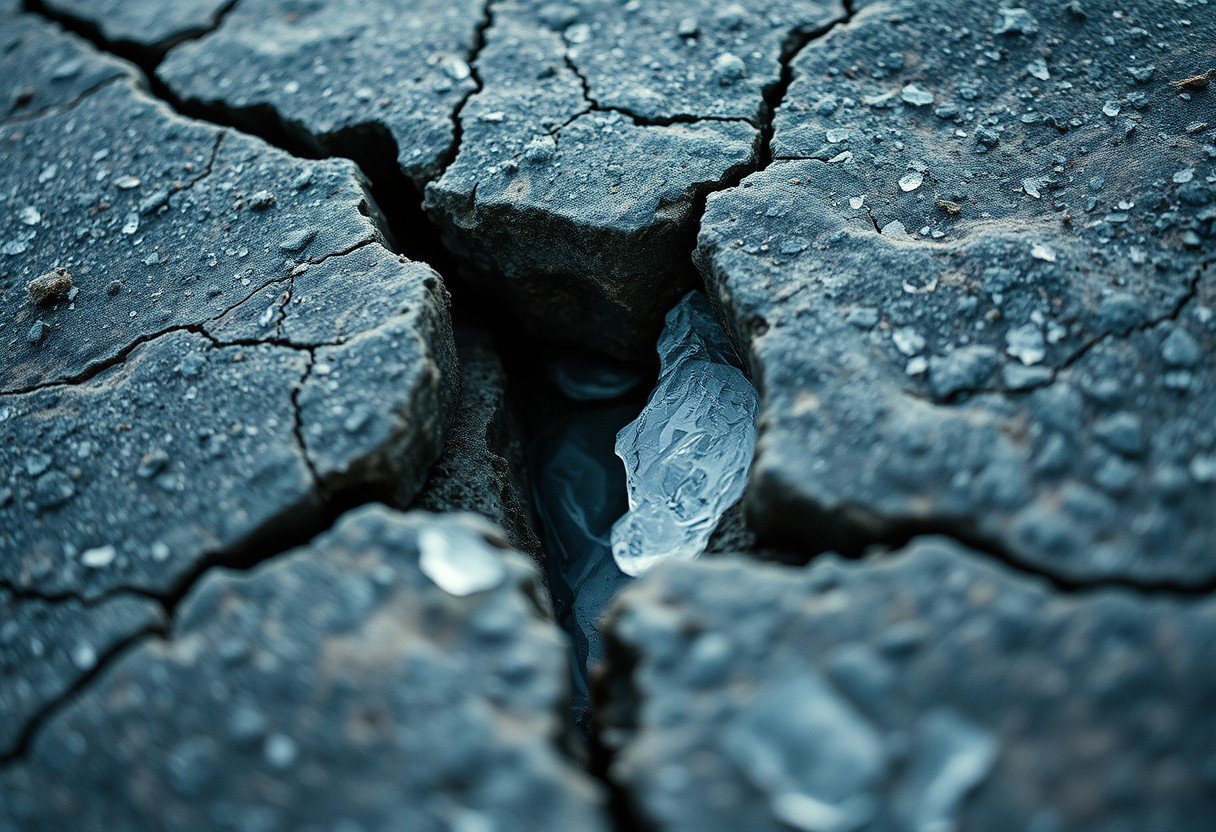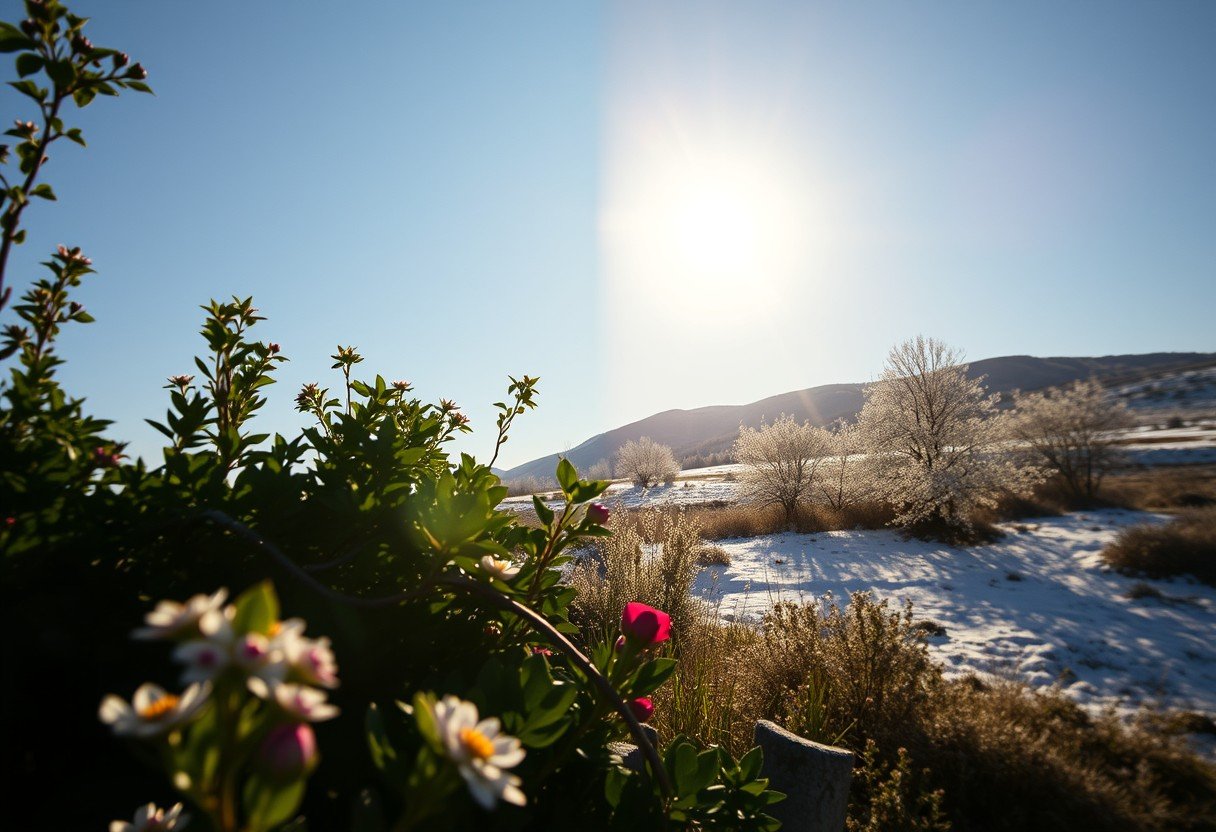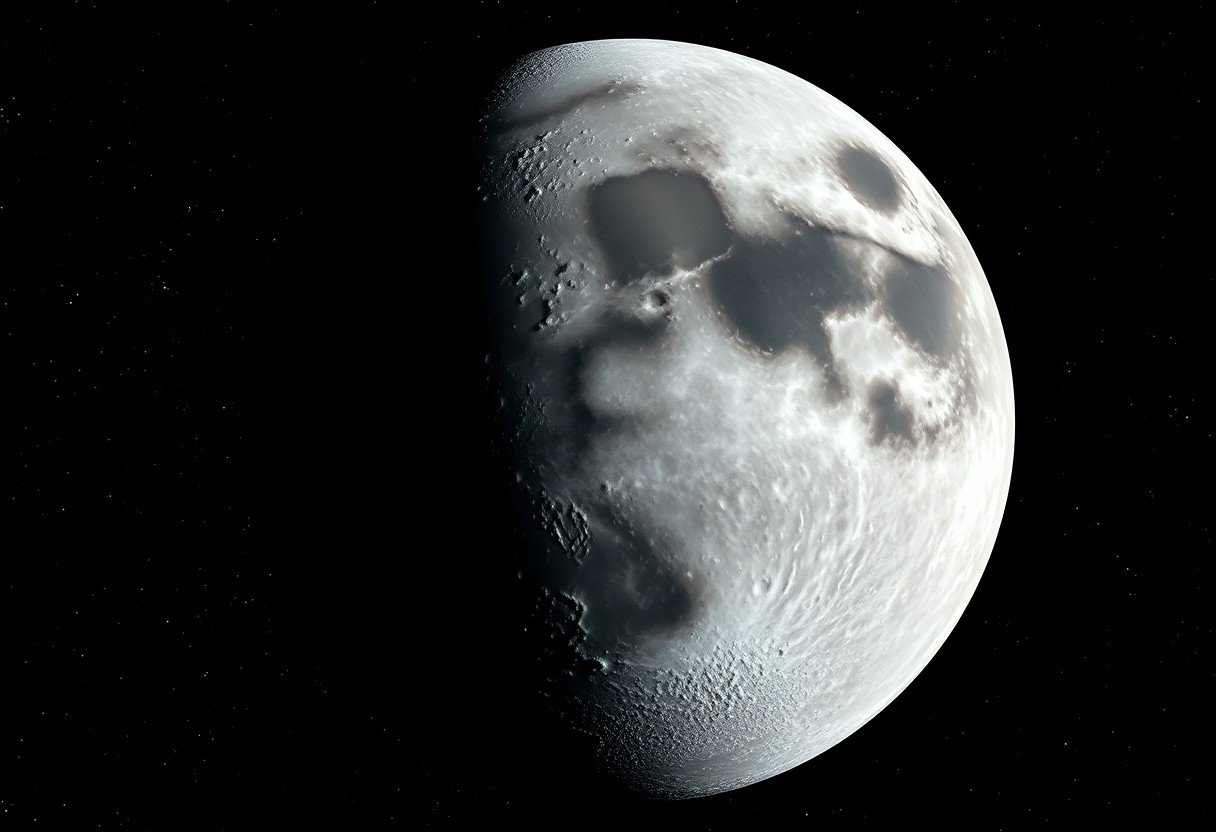Water freezing in rock cracks is a powerful natural process that breaks rocks into smaller pieces. It happens in cold seasons where water enters tiny gaps, turns to ice, and pushes the rock apart. This freeze thaw weathering works on cliffs, roads, and mountain paths. It matters to hikers, builders, and students because it shapes land and creates soil. The reason is simple. Ice takes more space than water and that pressure splits the rock.
What Is Freeze Thaw Weathering
Freeze thaw weathering is the breaking of rock by the growth of ice inside its cracks.
Water seeps into small joints and pores when it rains or snow melts. When the temperature drops below 0 degrees Celsius, the water turns to ice and expands. That push widens the crack a little. When ice melts, more water can enter deeper.
Over many cycles, the crack becomes larger and pieces of rock loosen. The broken fragments fall, collect as debris, and can be moved by gravity and streams. This is a physical process, also called mechanical weathering, because the minerals do not change.
This action is most active in places with many days that move above and below freezing. High mountains, polar regions, and cool temperate zones often show the strongest effects.
Why Ice Expansion Breaks Rock
Ice is about 9 percent larger in volume than liquid water, which creates pressure inside tight spaces.
In a sealed crack, that growth can build huge stress. Lab tests show ice growth can reach tens of thousands of pounds per square inch in confined gaps. Values up to about 30,000 psi can exceed the strength of many rocks.
The pressure acts on the sides of the crack. Minerals with pre existing flaws give way first, so old joints and micro fractures open faster. Repeated freezing then works like a wedge and turns hairline cracks into visible splits.
Not every cold night causes damage. The crack must hold water, the cooling must be slow enough for ice to grow, and the rock must be near its strength limit. When those three parts line up, blocks detach.
Which Rocks Are Most Affected
Rocks with more pores and weak layers let in more water and break faster under freeze thaw cycles.
| Rock Type | Porosity | Typical Response | Notes |
|---|---|---|---|
| Sandstone | High | Highly affected | Pores store water along grain spaces |
| Limestone | Medium to high | Highly affected | Joints and bedding planes admit water |
| Granite | Low | Moderately affected | Breaks along existing joints and micro cracks |
| Basalt | Low to medium | Moderately affected | Cooling joints can open under ice pressure |
| Slate | Low | Less affected | Dense, but splits along cleavage planes |
Even dense igneous rocks can fail if there is a system of joints. Sedimentary rocks often fail along bedding and cement lines. The key control is how well the rock holds water and the presence of natural planes of weakness.
Field signs include fresh sharp blocks at the base of cliffs, loose shards on trails, and open joints that are wider near the surface. These are classic marks of frost action.
How Climate And Seasons Control The Cycle
Areas with many freeze and thaw days see the fastest frost wedging and the most rock breakdown.
Three climate drivers matter most for freeze thaw weathering strength:
- Number of days that cross 0 degrees Celsius morning to night
- How much liquid water is available from rain, melt, or seepage
- Wind and sun that speed melting and refreezing of surface water
Mountain valleys often have big day night swings near freezing. That gives many cycles in a single season. Coastlines with spray and winter cold also show strong ice shattering on cliffs.
Climate change can shift the freeze line uphill or downhill. In some regions near 0 degrees average, the number of crossings can increase, which may boost frost damage to roads, walls, and natural rock.
Step By Step From Hairline Crack To Loose Gravel
The pathway from a tiny gap to a broken block follows a simple set of repeating steps.
- Water enters a small crack after rain or snow melt.
- Night cold drops the temperature below freezing and ice forms.
- Ice grows, expands, and widens the crack a little more.
- Day warmth melts the ice and more water seeps deeper.
- Many cycles loosen a piece that finally breaks off and falls.
The speed depends on rock type, crack size, water supply, and how often temperatures cross freezing. In wet seasons, cracks can fill and refill many times each week. In dry spells, the process slows until the next storm.
Small grains that fall away build thin soil over time. This is one reason valley floors have richer soils fed by material from nearby slopes.
Effects On Landscapes And Soil
Freeze thaw weathering shapes cliffs, builds talus slopes, and feeds the formation of fertile soil.
At the base of steep walls you often see piles of broken blocks called talus or scree. These piles are the direct result of ice wedging and gravity. On trails, you may notice sharp angular gravel that came from fresh breaks.
As fragments grind and mix with organic matter, they form soil. Soil stores water, buffers floods, and supports plant roots. Over thousands of cycles, valleys widen and ridges retreat as pieces are removed.
Streams and wind then carry the smaller particles. Sediment moves to river bars, floodplains, and deltas, where it supports farms and wetlands.
Human Actions That Speed Or Slow Weathering
Our choices can increase frost damage or help manage it on roads, buildings, and trails.
Urban surfaces shed water quickly into joints in pavements and walls, feeding more freeze thaw cycles. De icing salts draw in moisture and can raise the time that water stays in cracks, which may add to the stress on structures.
Good design can slow damage. Builders use proper drainage, seal joints, and choose rock with lower porosity for cold sites. Trail crews place water bars and keep cuts dry to reduce crack filling in winter.
Warmer winters can still bring more freeze thaw days in places near the freezing mark. Planning for those swings helps protect bridges, historic stonework, and hillside roads.
FAQ
What Is Freeze Thaw Weathering And How Does It Break Rocks?
It is the process where water in rock cracks freezes, expands by about 9 percent, and pushes the crack wider. Over many cycles, that pressure exceeds rock strength and pieces break off.
Where Does Freeze Thaw Weathering Happen Most?
It is strongest in places with many days that cross 0 degrees Celsius, like mountain regions and cool temperate zones. Cliffs, boulder fields, and road cuts often show clear signs.
How Long Does It Take For Rocks To Break From Freezing?
The change is slow and builds over months to years. The pace speeds up with more water, more freeze thaw days, and weaker rocks with many joints.
Which Rock Types Are Most At Risk From Ice Wedging?
Porous rocks like sandstone and limestone are highly affected because they store more water. Dense rocks like granite also break where joints and micro cracks already exist.
Can I See Evidence Of Freeze Thaw On A Hike?
Look for fresh sharp fragments at the base of outcrops and widened cracks that are clean inside. After a cold snap, you may see new chips on paths below cliffs.
How Does Freeze Thaw Weathering Help Make Soil?
Breaking large blocks into small grains increases surface area and mixes with plant matter. Over time this builds soil that holds water and nutrients for roots.









Leave a Comment